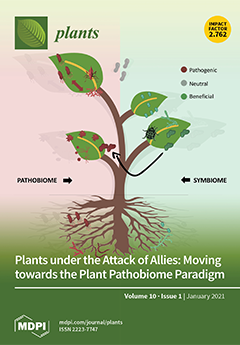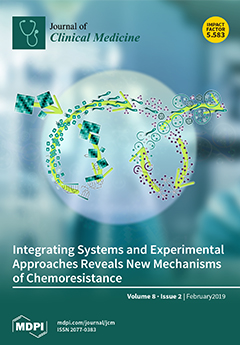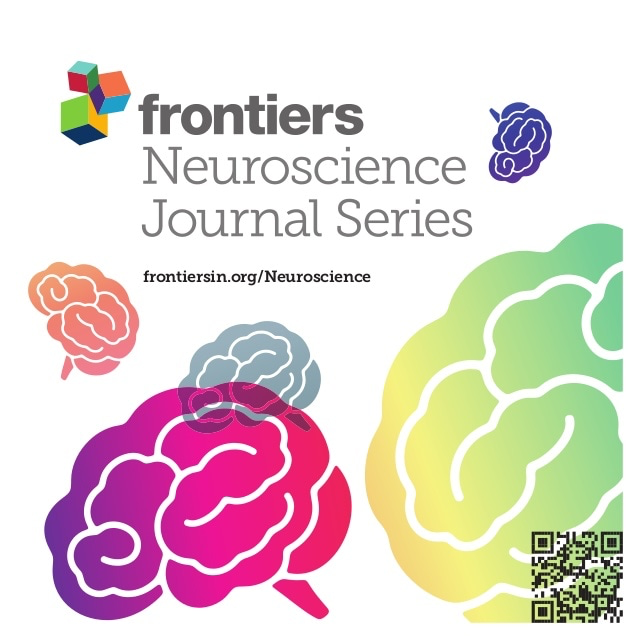Gan Mai Da Zao Tang
How to submit an article:
- Registered users can submit any published journal article that has a unique DOI (Digital Object Identifier) name or link to Research Hub.
- For example, you can paste the full DOI link:
https://doi.org/10.1109/5.771073or just the DOI name:10.1109/5.771073into the field above and click submit. - The person who is first to submit a valid article to Research Hub will forever be credited for it, and every article submission earns you +6 Research Points.
Published research studies are articles that present the findings of original research that has undergone a peer-review process and has been made publicly available in scholarly journals, books or other media.

Major Plant in Herbal Mixture Gan-Mai-Da-Zao for the Alleviation of Depression in Rat Models
2022 Jan 19 Plants Li YX, Cheng KC, Hsu CT, Cheng JT, Yang TT
Animal Study Gan Mai Da Zao Tang Depression Serotonin Gan CaoThe traditional Chinese medicine Gan Mai Da Zao Tang may lessen depressive behaviors in rats, likely through licorice increasing serotonin transporter and brain-derived neurotrophic factor signals in the hippocampus.

Spirit-Quieting Traditional Chinese Medicine may Improve Survival in Prostate Cancer Patients with Depression
2019 Feb 08 Journal of Clinical Medicine Lin PH, Lin SK, Hsu RJ, Pang ST, Chuang CK, Chang YH, et al.
TCM for depression was associated with a significantly lower risk of overall mortality compared to no TCM. Therefore, TCM for depression may have a positive association with the survival of prostate cancer patients with depression.
Cohort Study Jia Wei Xiao Yao San Prostate Cancer Gan Mai Da Zao Tang Chai Hu Jia Long Gu Mu Li Tang
GABA and 5-HT Systems Are Involved in the Anxiolytic Effect of Gan-Mai-Da-Zao Decoction
2019 Jan 22 Frontiers in Neuroscience Chen HS, Gu LJ, Yang YX, Guo JY
Animal Study Serotonin Gan Mai Da Zao Tang GABA systemGan Mai Da Zao decoction has shown comparable anxiolytic effects to Diazepam and Buspirone in mice, possibly regulated by serotonin and gamma-aminobutyric acid receptors.

Herbal medicine (Gan Mai Da Zao decoction) for depression: A systematic review and meta-analysis of randomized controlled trials
2014 Dec Maturitas Jun JH, Choi TY, Lee JA, Yun KJ, Lee MS
In summary, our systematic review and meta-analysis failed to provide evidence of the superiority of GMDZ decoction over anti-depressant therapies for major depression, post-surgical depression, or depression in the elderly, although there was evidence of an effect in post-stroke depression.
Systematic Review Meta-Analysis Gan Mai Da Zao TangResearch insights are moderated by the Research Hub team and offer an at-a-glance overview of interesting research findings.

2022 Plants
The traditional Chinese medicine Gan Mai Da Zao Tang may lessen depressive behaviors in rats, likely through licorice increasing serotonin transporter and brain-derived neurotrophic factor signals in the hippocampus.
Animal Study Depression Gan Cao Serotonin
Major Plant in Herbal Mixture Gan-Mai-Da-Zao for the Alleviation of Depression in Rat Models
Li YX, Cheng KC, Hsu CT, Cheng JT, Yang TT

2019 Frontiers in Neuroscience
Gan Mai Da Zao decoction has shown comparable anxiolytic effects to Diazepam and Buspirone in mice, possibly regulated by serotonin and gamma-aminobutyric acid receptors.
Animal Study GABA system Serotonin
GABA and 5-HT Systems Are Involved in the Anxiolytic Effect of Gan-Mai-Da-Zao Decoction
Chen HS, Gu LJ, Yang YX, Guo JY
Review Articles
Review articles summarise and critically evaluate the current state of research on a specific topic or field by synthesising multiple primary research studies.
Clinical Trials
Clinical trials are research studies that involve people and are conducted to evaluate the safety and efficacy of new treatments or interventions, such as drugs, medical devices, or behavioural therapies.
Study Protocols
Published study protocols are detailed plans that outline the objectives, methodology, statistical analyses, and organisation of a research study that have been made publicly available for others to review and use as a reference.
Presentation Slides

Animal Study
The traditional Chinese medicine Gan Mai Da Zao Tang may lessen depressive behaviors in rats, likely through licorice increasing serotonin transporter and brain-derived neurotrophic factor signals in the hippocampus.
Li YX, Cheng KC, Hsu CT, Cheng JT, Yang TT

Animal Study
Gan Mai Da Zao decoction has shown comparable anxiolytic effects to Diazepam and Buspirone in mice, possibly regulated by serotonin and gamma-aminobutyric acid receptors.
Chen HS, Gu LJ, Yang YX, Guo JY
Executive Summary
Write an executive summary in the form of a blog article on the topic of "Research into Chinese medicine treatment for Gan Mai Da Zao Tang" summarising the research below and using language that can be easily understood by patients and avoiding medical jargon using a professional and caring tone of voice.
Write an executive summary in the form of a blog article on the topic of "Researched Chinese medicine treatments for Gan Mai Da Zao Tang" summarising the research below in an objective and easy to understand way, and using language that can be easily understood by patients. Group the article into Chinese medicine treatments first, followed by nutrition and other treatments. Avoid using medical jargon and use a professional and caring tone of voice.
Write me a concise but easy to understand executive summary on the topic of "Chinese medicine treatments for Gan Mai Da Zao Tang" based on the following research that I will give you. Your summary should be 2 paragraphs long in Australian English spelling and include references to the studies.
A Animal Study published in 2022 in the journal Plants found that The traditional Chinese medicine Gan Mai Da Zao Tang may lessen depressive behaviors in rats, likely through licorice increasing serotonin transporter and brain-derived neurotrophic factor signals in the hippocampus. This study experimentally examined the antidepressant impacts of Gan-Mai-Da-Zao (GMDZ), a Chinese traditional medicine that contains blighted wheat, licorice, and jujube. The researchers used an unpredictable chronic mild stress model in rats, some of whom received an injection with p-chlorophenylalanine to generate a chemical model for depression. The investigators employed behavioral tests, including forced swim tests, open field tests, and sucrose preference tests, to evaluate the chronic influence of GMDZ. The oral application of GMDZ over 21 days considerably eased depressive behaviors in rats induced by either the unpredictable chronic mild stress or p-chlorophenylalanine. The treatment increased the expression of the serotonin transporter and brain-derived neurotrophic factor in the hippocampus in the rats with depression. However, rats provided with a similar herbal mixture that did not include licorice showed a significantly worse response, suggesting that licorice may play an essential role in the efficacy of GMDZ in combatting depression-like behaviors.
A Animal Study published in 2019 in the journal Frontiers in Neuroscience found that Gan Mai Da Zao decoction has shown comparable anxiolytic effects to Diazepam and Buspirone in mice, possibly regulated by serotonin and gamma-aminobutyric acid receptors. The mice were given the Gan-Mai-Da-Zao (GMDZ) decoction orally at different concentrations for a week, with Diazepam and Buspirone serving as positive controls. Anxiety-level testing was conducted using a combination of the elevated plus-maze, light/dark box, marble burying, open field, and rota-rod tests, providing a comprehensive assessment of the decoction's effects on mice. Furthermore, the anxiolytic effects that GMDZ induced in the mice were challenged by the application of Flumazenil, a gamma-aminobutyric acid-A receptor antagonist, and WAY-100635, a serotonin-1A receptor antagonist. They found that the effects were successfully inhibited, indicating that the mechanism of action of GMDZ could be linked to both the serotonin and gamma-aminobutyric acid receptors in the nervous system, thereby reducing anxiety-like behavior in mice.
Moderation Tools
Topic
Sign In
Users not signed in are limited to viewing the 5 most recent items of content.